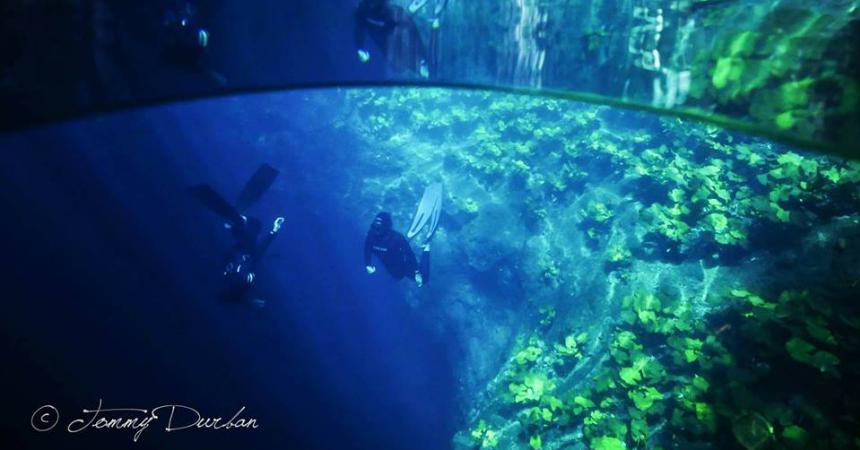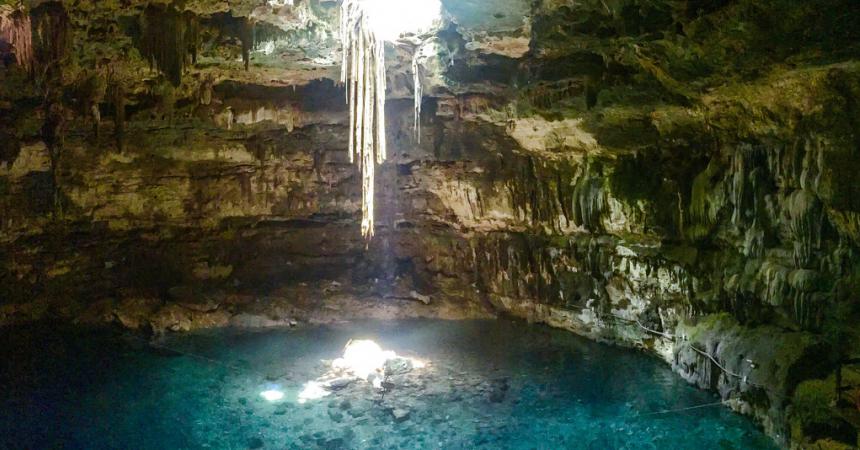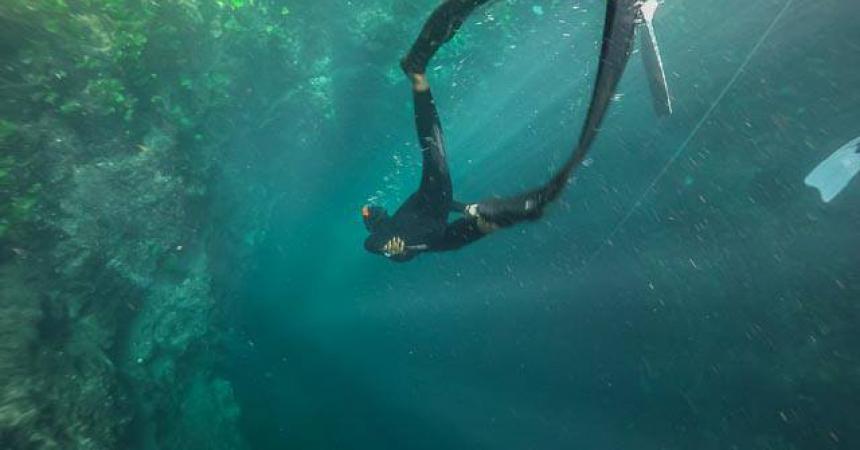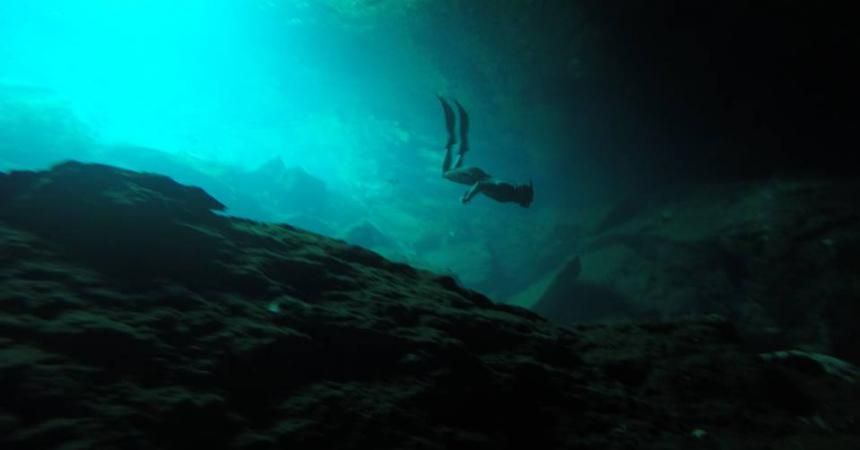June 15 2017, and I am on a Rome-Cancùn flight carrying my freediving gear, with three weeks of pure freediving ahead of me, around the most beautiful and mysterious spots in Mexico. I do not know what to expect, as a few years have passed from my last recreational trip, and I am thoroughly electrified because of this adventure I am about to experience.
I have seen photos, watched videos and I have talked to every single freediver who has been diving into the Riviera Maya, and I simply cannot wait to see those wonderful places with my very own eyes.
My to-do list:
- freedive in the Cenotes
- see whale sharks
- a few recreational freedives in underwater currents
- visit the Mayan ruins
I wish that I could tell you everything at once, and I would like to do it right now, but it has been such an emotional experience that I have to break it into every single memory, starting with the Cenote.
The trip was organised by Amancay Freediving, a school in Playa del Carmen run by an Argentinian girl who took charges of all the activities, from the sessions on the lane to the Youcatan tour.
This is more or less how the days went: I would get to Amancay around 10am, get my gear ready, and around 10:30 we would leave for a session in the Cenote, making our way back to the school around 17:30. If you’re wondering what Cenotes are, let me explain it to you:
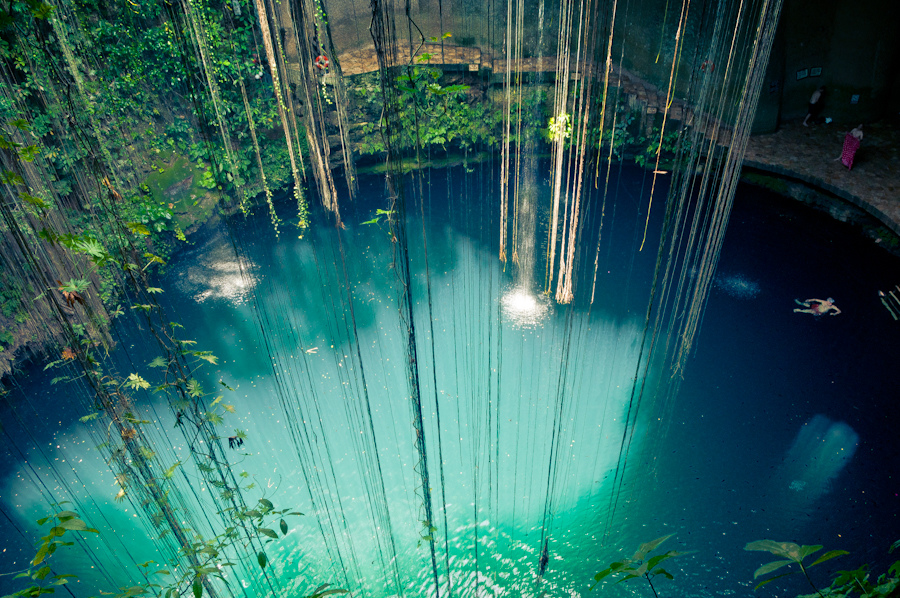
I will never forget the feeling I had the first time I saw a Cenote: it was Cenote Angelita, I was talking to some boys doing their first level freediving course, and as I was walking in the jungle and speaking with them, suddenly the view took my breath away. I had imagined a beautiful place, but never like this: everything was surrounded by this magical surreal atmosphere, with the harmony between water and nature so perfect. As we say, my wetsuit could not contain my emotions! I just could not speak: I had to go see what was hiding underneath that pristine water mirror.
I descended the wooden steps, sat on the edge of the platform, and put my feet in the cold water. I had reckoned it to be around 23°C-24°C (73°F-75°F): not a problem with my 5mm wetsuit. I hanged in there a little more, looking at everything that surrounded me, while listening to the birds singing. It all seemed very different from my usual set: noises, odours, colours, everything seemed new to me.
I got into the water and, although I was wearing my goggles and snorkel, I still clearly remember the smell. You know that smell when it rains a lot in the country? That’s exactly the smell I perceived: the scent of wet soil. In that moment I realised that I was finding myself in a completely new environment, and the only thing to do was to take a big breath, go down and explore it.
Visibility from the surface was good, about 15mt, and it got better as I started to descend.
One thing you should know about Cenotes is that there is fresh water in the upper 30mt but below there is a ‘halocline’, which is a phenomenon for which there is a vertical gradient of salinity, and the water gets salty. Between these two areas there is a sulphuric cloud, characteristic of all Cenotes.
This cloud is too heavy to rise to the surface, and it is too light to sink, so it floats midwater separating the water into two zones. When the sky is clear with lots of sunlight, the underwater cloud reflects the light like a mirror, irradiating the whole Cenote with rays that make it come to life with a magical display of colours and shapes.
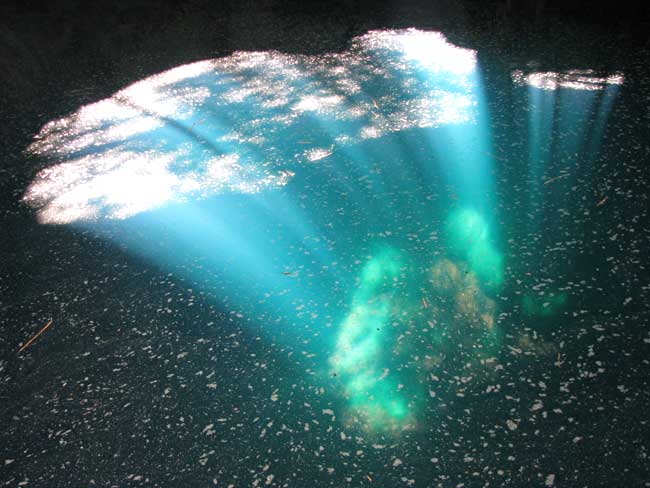
I had studied the theory well, I knew what was hiding below, and I was ready to see the cloud with my very own eyes, so I took my last breath and down I went. The colour of the water was different from the sea, much greener, and I kept on going down to 12-15m, but I could not estimate the altitude exactly, as fresh water’s pressure is different from the salt water that I am used to. I looked down and saw the sulphur cloud. At this stage, I got hold of the rope and I stopped to look at the yellow cloud reflecting the sun rays, with the memory of the earthy smell filling up both my nose and my mouth. I kept on looking around, and in one corner the silhouette that looked like a shipwreck emerged. I blinked my eyes to zoom in, and I recognised the shape of a giant rock on top of which a huge tree laid.
Enough emotions for one dive, so I decided to resurface and get ready for my second dive.
While going back up, I was really struck by the rocky walls of the Cenote, so rich with caves and stalactites, with colours ranging from dark brown to grey, and here and there the root of a ficus or some other giant tree. And, as if it wasn’t enough, raising my eyes to the surface, I could see that the sky was enclosed in a perfect circle, the perimeter of which was shaped by the jungle.
Once emerged, I executed the recovering protocol with this silly look on my face, as if I had just got back from Mars. I shared my enthusiasm with the boys, and started to recover.
I knew I had to wait for my turn, but I wanted to get down so badly, I just could not wait, and I was as impatient as a child. I wanted to go deeper and deeper, and observe closely a world that had struck me deeply inside.
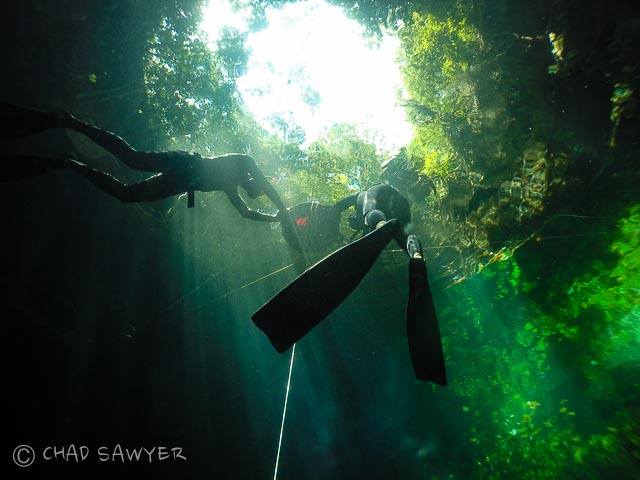
While trying to relax, I was looking at the other guys going down with their trainer and coming back up with their faces lit up, or, as we describe a happy freediver, ‘with the sun in their eyes’.
I am so glad that I could share this incredible experience with you!
Stay tuned!
Stay tuned!

